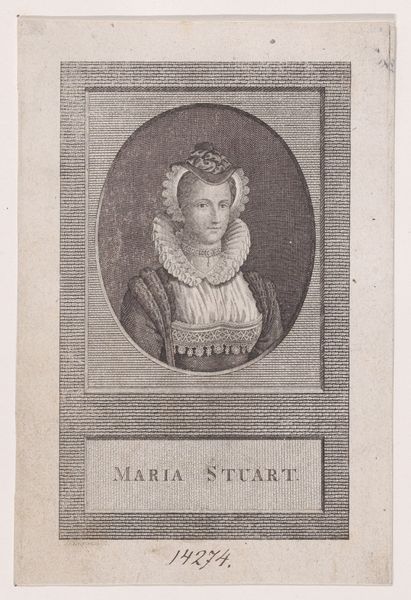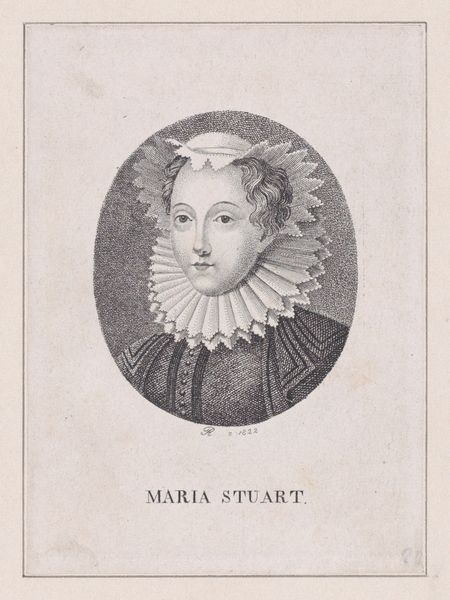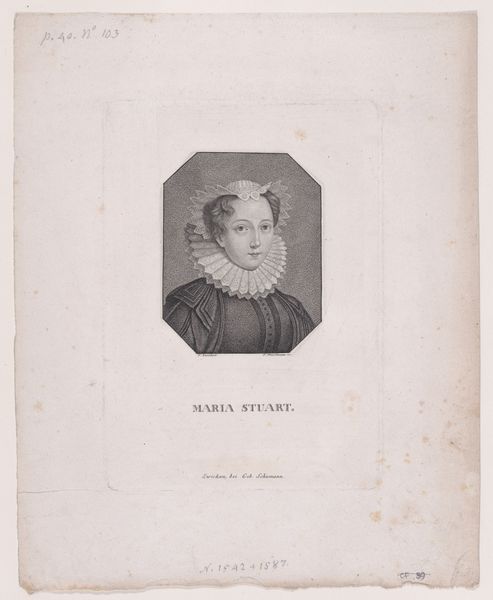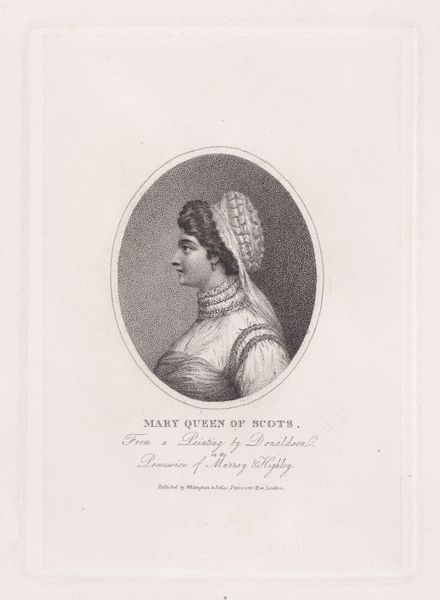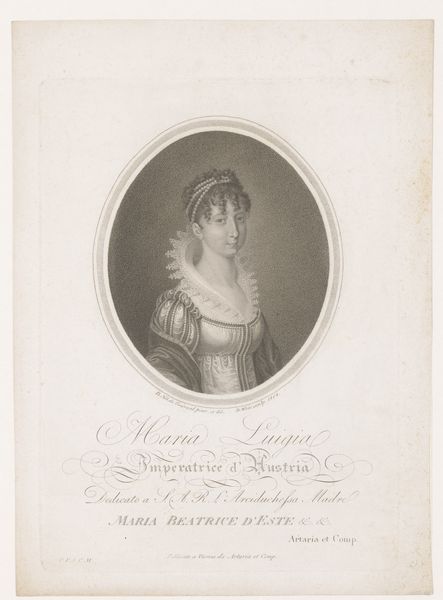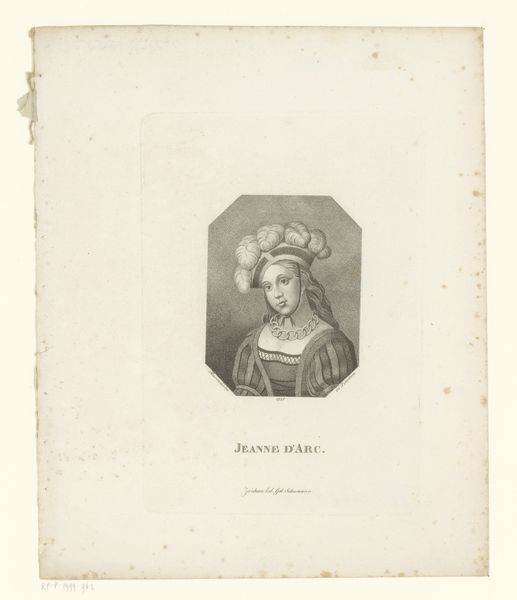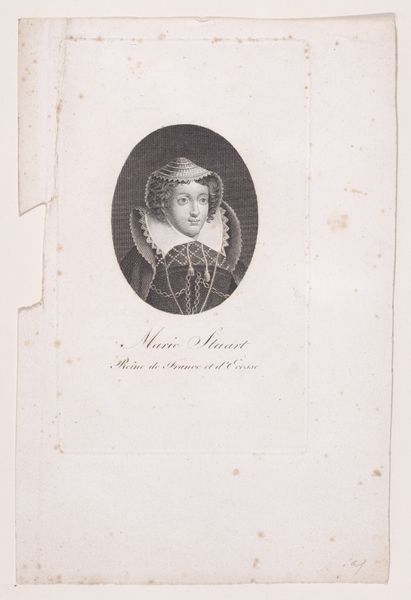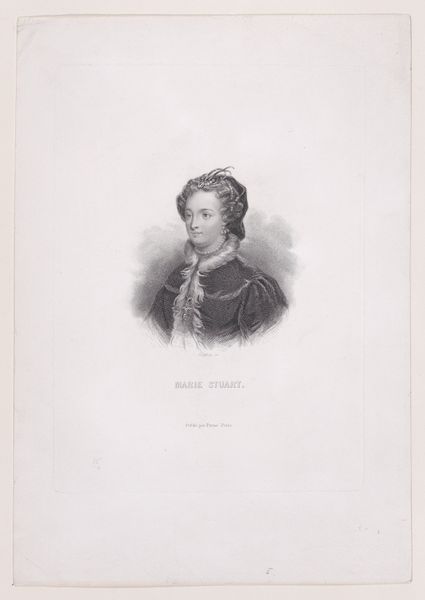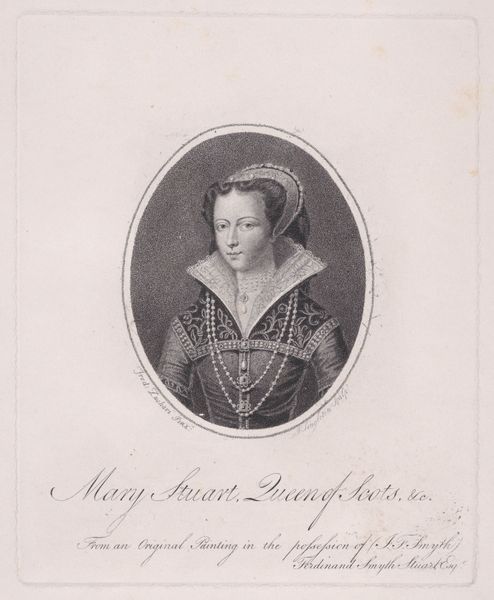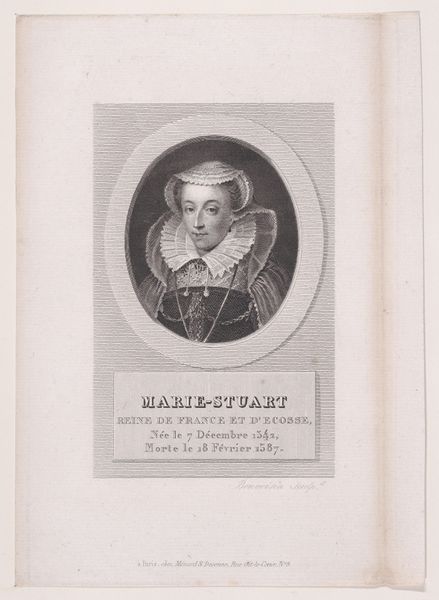
drawing, coloured-pencil, print, engraving
#
portrait
#
drawing
#
coloured-pencil
# print
#
coloured pencil
#
history-painting
#
academic-art
#
engraving
Dimensions: Sheet: 8 1/4 × 5 3/16 in. (21 × 13.2 cm)
Copyright: Public Domain
This portrait of Mary, Queen of Scots, was made in the 19th century by Charles-Michel Geoffroy, using engraving. Engraving, a printmaking technique, involves incising an image onto a metal plate, which is then inked and pressed onto paper. Look closely and you will see the intricate network of lines that define the form and create subtle tonal variations. This was a laborious, highly skilled process demanding precision and control of line weights. The rise of printmaking in the 19th century coincided with the Industrial Revolution, which made the mass production of images more accessible and affordable. This portrait, therefore, speaks to broader social and economic contexts. The relative ease with which engravings can be reproduced meant that images like this were widely circulated, catering to a growing market for historical and popular imagery. By focusing on the materiality of printmaking, we can appreciate how it has shaped the cultural significance and accessibility of art, blurring the boundaries between craft and fine art.
Comments
No comments
Be the first to comment and join the conversation on the ultimate creative platform.
